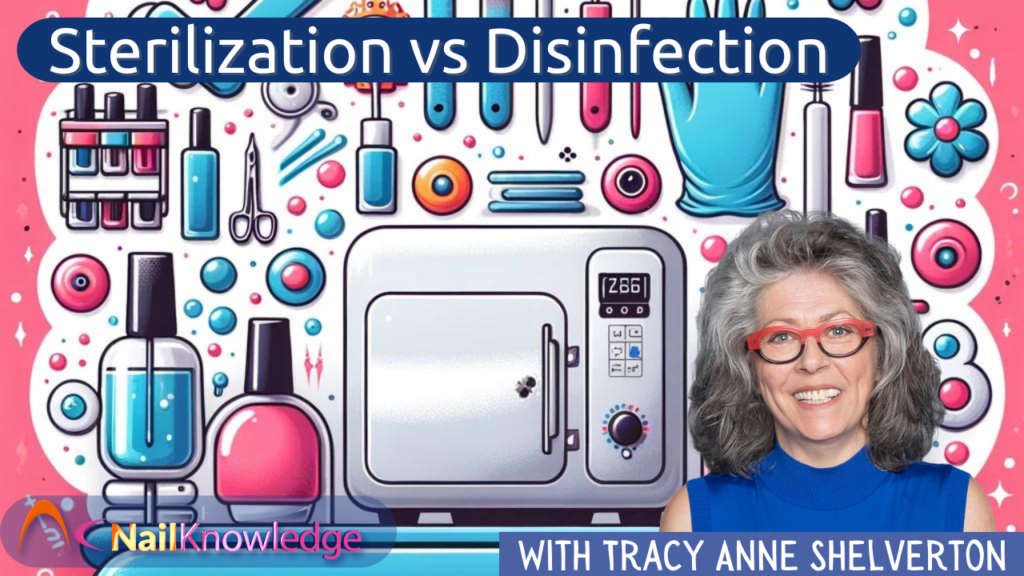In the nail industry, maintaining a clean and safe environment is crucial for the well-being of both clients and technicians. One of the most important aspects of this is understanding the difference between sterilization and disinfection. While both processes are essential, they serve different purposes in ensuring hygiene. Sterilization involves the complete removal or killing of all viable organisms, including spores, while disinfection reduces the number of microorganisms but may not eliminate them entirely.
We will explore these processes in depth, along with practical tips for keeping your tools, work surfaces, and personal hygiene at the highest standard to ensure the safety of your clients, especially those with compromised immune systems.
The Difference Between Sterilization and Disinfection
- Cleaning & Disinfection: This process removes dirt, dust, and organic matter while killing most microorganisms. However, it doesn’t remove them entirely.
- Sterilization: This method kills all organisms, including spores, ensuring the highest level of cleanliness. Although dead organisms and toxins (pyrogens) may remain, the risk of infection is eliminated.
Why Proper Hygiene Matters in Nail Care
Nail professionals may unintentionally transfer infections through contact with tools, hands, or the air. This can be particularly dangerous for clients undergoing chemotherapy or those with weakened immune systems. Maintaining personal hygiene, wearing appropriate clothing, and keeping workspaces clean is essential in reducing this risk.
Hand Washing and Disinfection
Hand hygiene is one of the simplest yet most effective ways to protect both you and your clients:
- Soap and Water: Hand washing with soap and water removes about 96% of pathogens. Make sure both you and your client wash your hands before starting any nail service.
- Hand Disinfection: While hand disinfectants remove transient and some resident bacteria, they don’t clean dirt or grease. Use disinfection products in addition to washing your hands.
When to Wash and Disinfect Your Hands
- Before every treatment, even if the client’s skin is intact.
- When performing procedures that involve breaking the skin barrier.
- After removing gloves, physical contact with broken skin, or inspecting feet or hands.
Tool Sterilization and Cleaning for Nail Professionals
Unlike hospitals where tools are sterilized for every procedure, nail salons need to be responsible for their own cleaning and sterilization processes:
- Cleaning Tools: Tools should be washed with soap and water, then soaked in a cleaning fluid specific to your country’s regulations.
- Sterilization: If possible, use an autoclave to sterilize tools and efile bits. Autoclaves sterilize using high temperatures and pressure, ensuring tools are safe to use for every client. Modern autoclaves are now more affordable and efficient, making them a viable option for nail salons. Remember to wash the tools with soap and water first as this also removes normal debris accumulated during the nail service.
Final Thought: The Importance of Decontamination
Decontamination is the ultimate step in ensuring the complete safety of tools, workspaces, and environments by eliminating all microbial contamination. Following strict hygiene practices, sterilization, and disinfection protocols not only protects your clients but also upholds the professional standards of your salon.
By implementing these practices, nail professionals can offer safer services while promoting a clean, sterile environment in the salon.


